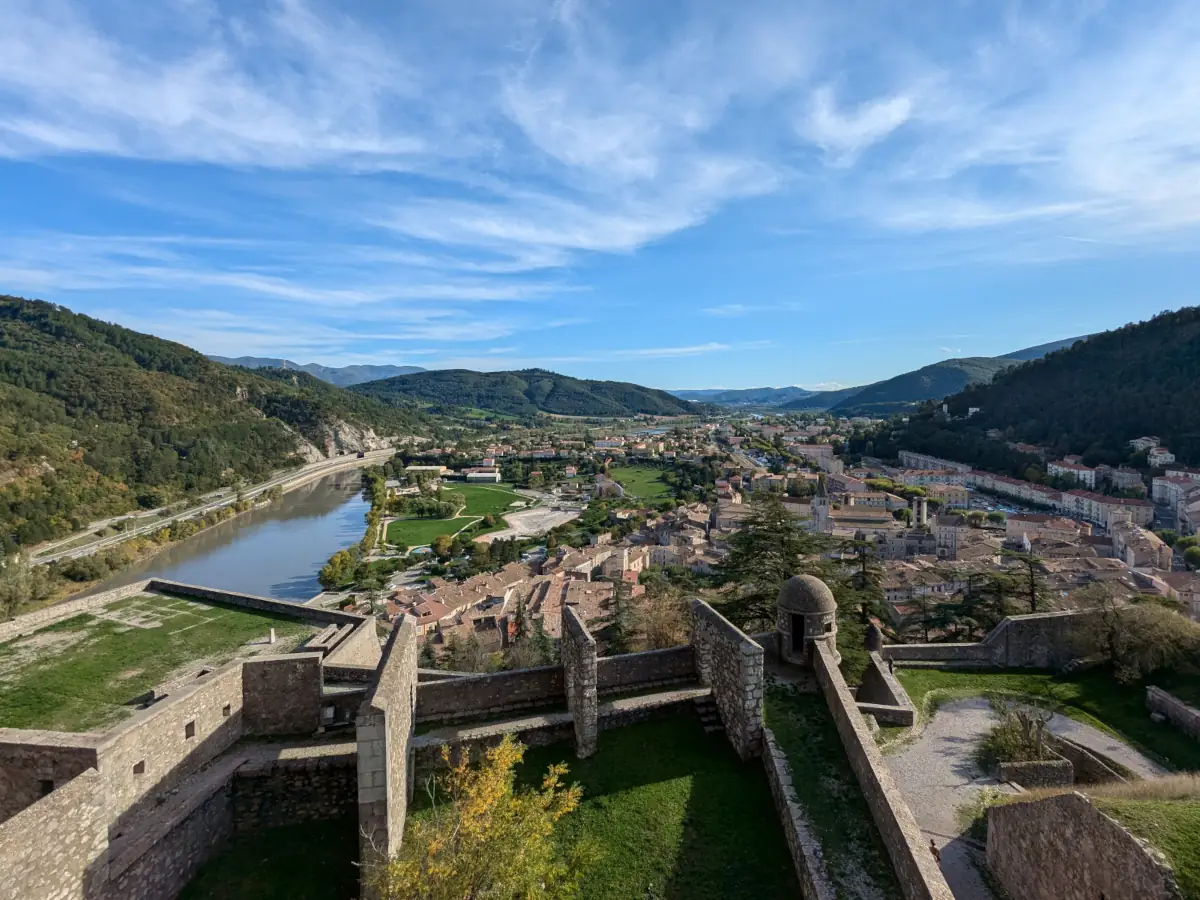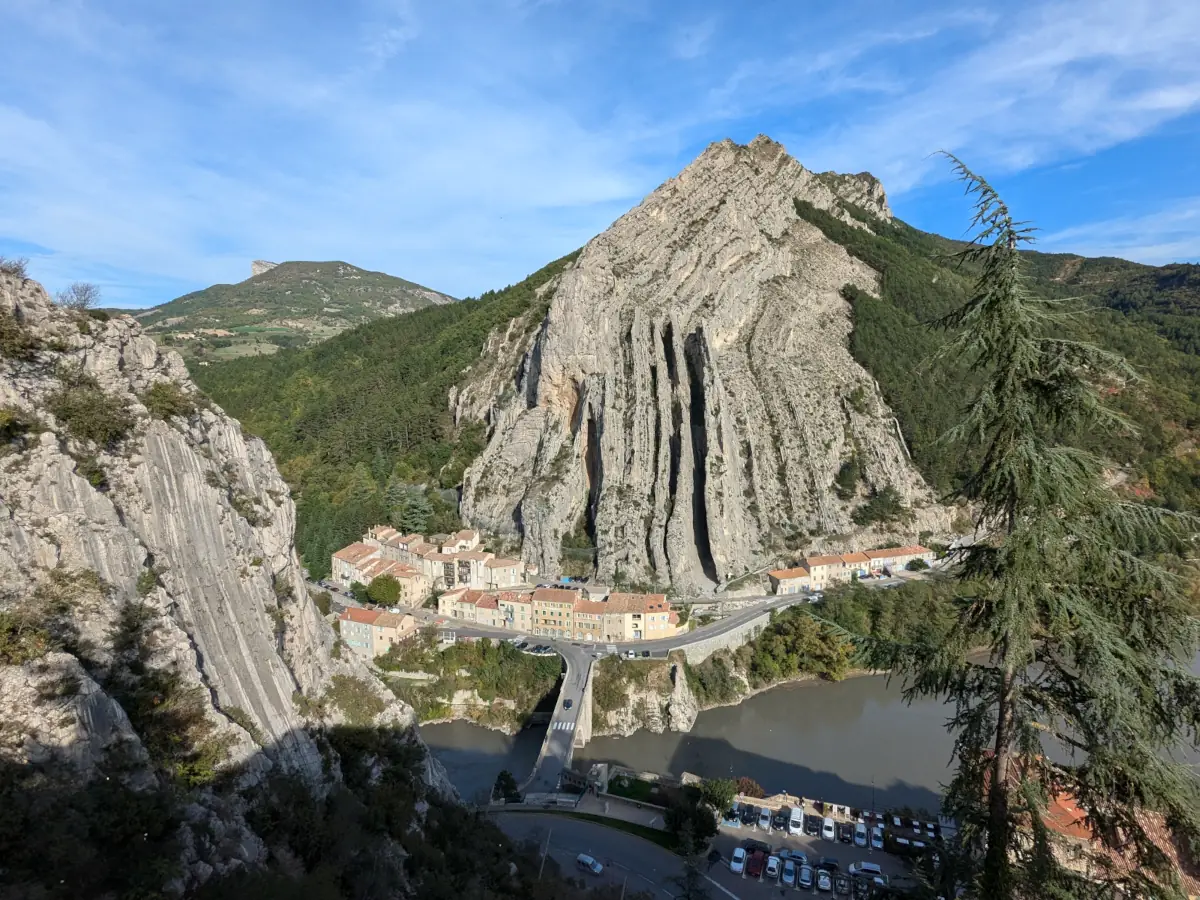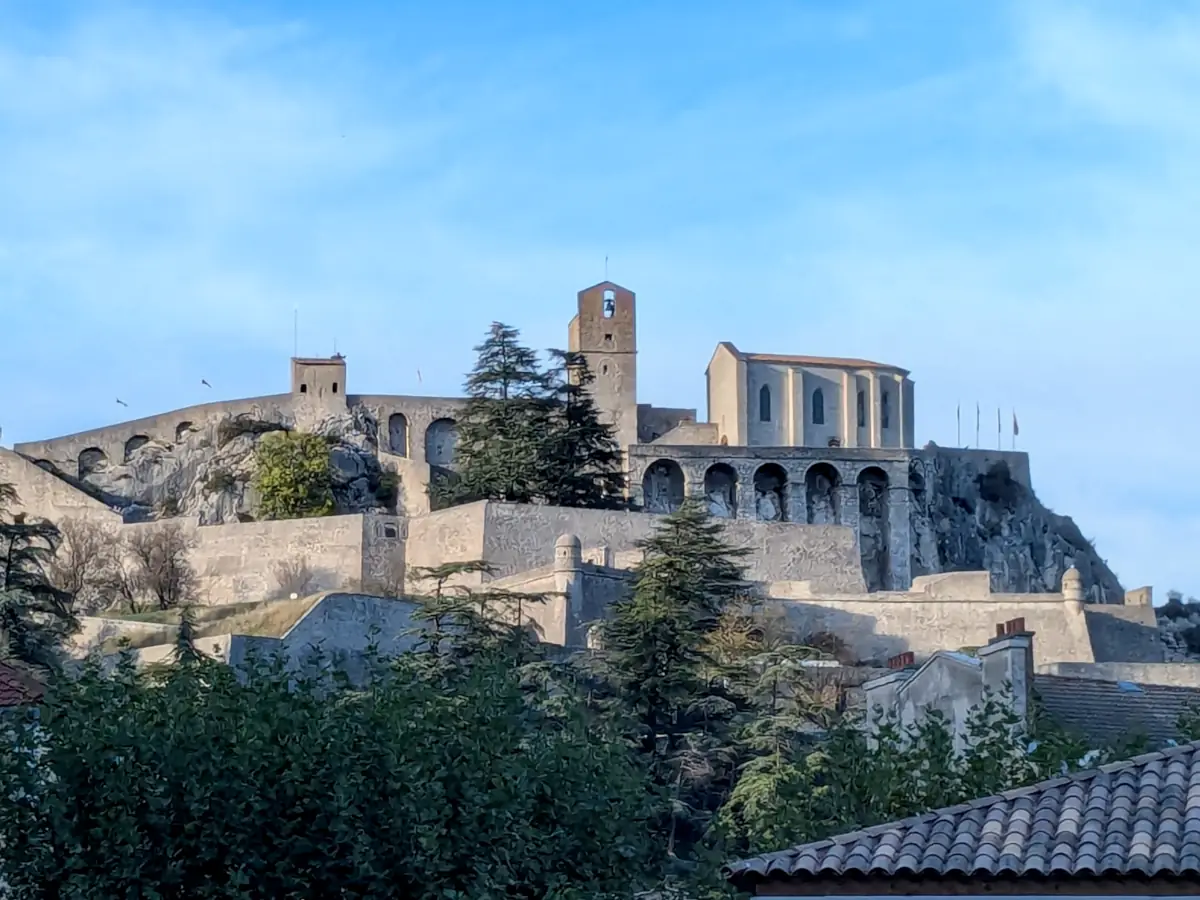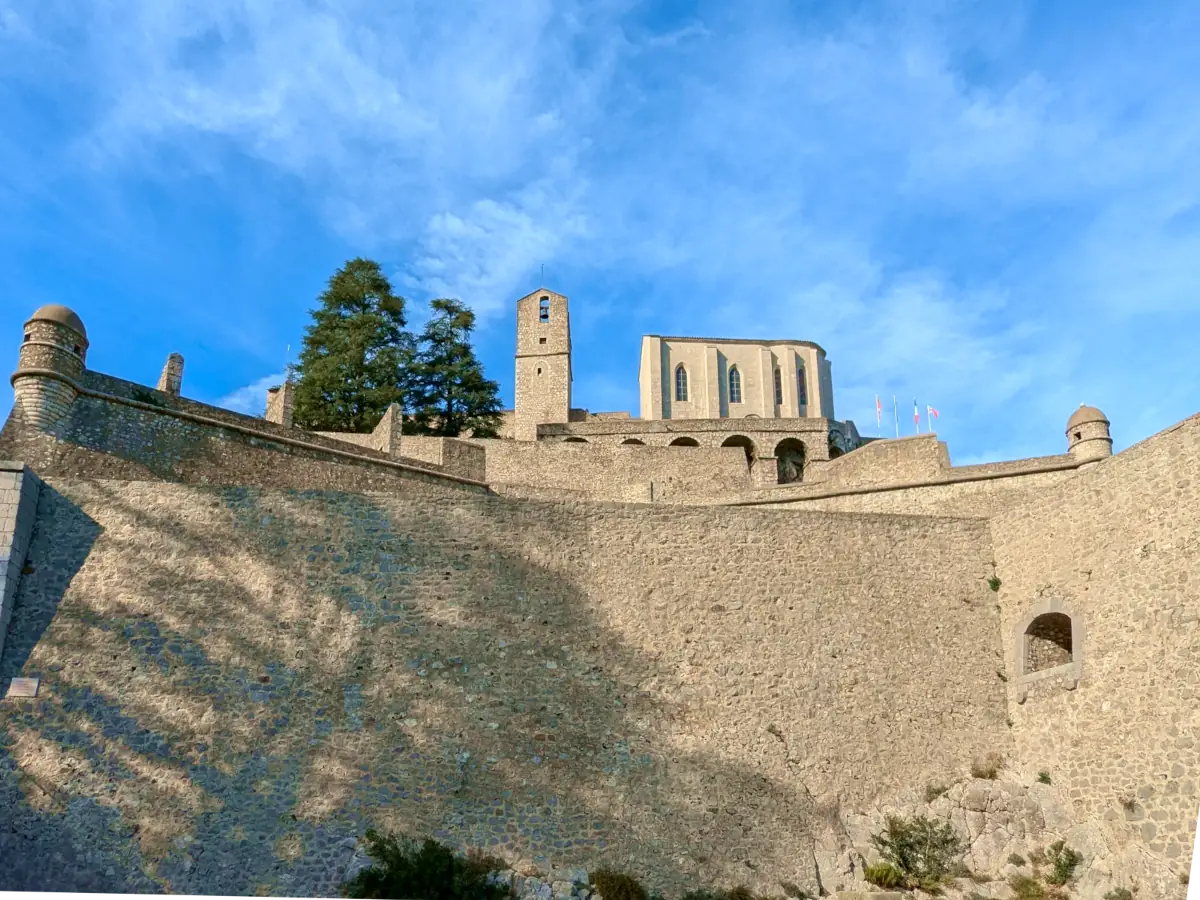Guardian of Provence’s gateways, it offers breathtaking panoramas over the Durance Valley and the Rocher de la Baume.
Perched on its rocky spur, the Citadel of Sisteron boldly dominates the Durance Valley, overseeing the passage between Provence and Dauphiné. For centuries, this imposing fortress has secured the narrowest point of the valley, where the alpine river carves its way between steep cliffs before curving around the Luberon massif and joining the Rhône Valley.

A Strategic Defensive Masterpiece
Originally built in the Middle Ages, the citadel evolved over the centuries, modernized in the 17th century with new fortifications under Vauban’s guidance. Its massive walls and bastions reflect the military genius of the era. Below, the old town of Sisteron stretches out, offering a striking contrast between its vibrant streets and the austere power of the fortress above.
The citadel did more than protect the valley: it witnessed and played a role in major historical upheavals. Occupied by feudal lords, besieged during the Wars of Religion, it served as a refuge, a prison, and a strategic outpost. The stones of its walls still echo with the stories of soldiers, craftsmen, and travelers who left their mark here.

Decline and Revival
As the threat of war receded, the citadel gradually lost its military importance, nearly falling into obscurity in the 19th century. It was not until the 20th century that its heritage and cultural value were recognized. Restoration campaigns returned the citadel to its former majesty, making it an emblematic site of the region. Today, it welcomes thousands of visitors each year, who come to admire its spectacular views, secret passages, and evocative exhibitions.

Destruction during World War II
During World War II, the Citadel of Sisteron suffered heavy damage. In August 1944, during the Liberation of Provence, Allied bombings aimed at destroying the bridge to halt German troops also hit the citadel and part of the town. While strategically necessary, these strikes caused over 300 casualties and extensive destruction, severely damaging the walls and several historic buildings. This tragic event left a deep mark on the local population, who faced the loss of a cherished symbol of their heritage. After the war, as the town healed, sustained efforts were undertaken to restore the citadel. Reconstruction work carefully preserved the authenticity of the monument, breathing life back into this witness of Provence’s history.
Find a Bed & Breakfast near Sisteron
These initiatives have transformed a wounded site into a place of memory and culture, now welcoming visitors from around the world in a setting of exceptional natural beauty.



